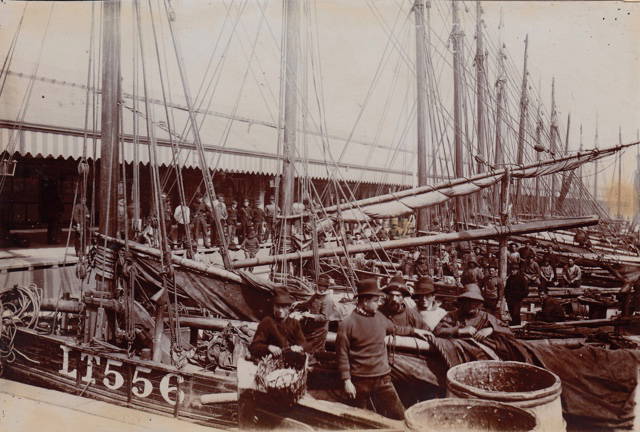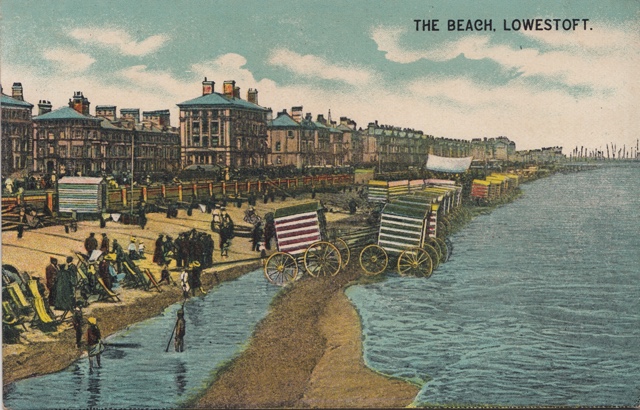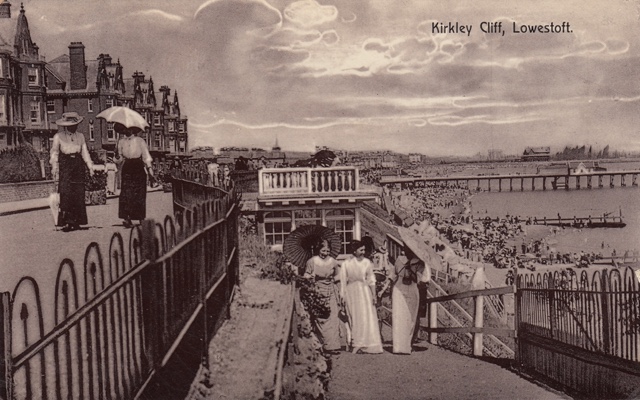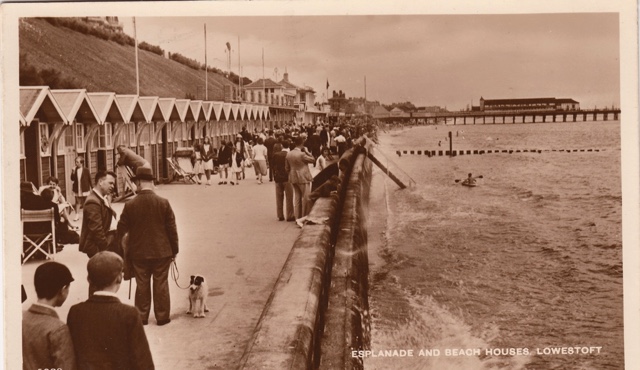The history of Kirkley
When was Kirkley founded? No one knows, but stone tools were found in the nearby sea cliffs that date back to 700,000 years ago, making the area one of the earliest places in Europe that show evidence of hominid occupation. The sandy beach and fens we now know as Kirkley was once the home of mesolithic humans and many ancient animal species like mammoths, tigers and hyenas when it was part of the wider European continent. About 6200 BCE rising water levels and a tsunami created the English Channel and separated what is now Britain from France. Suddenly, Kirkley had sea front property!
Jump forward to William the Conqueror’s Domesday Book and we see Kirkley listed as a tiny fishing village of 17.4 souls. Who the “.4” person was is not recorded.
And that’s the way Kirkley stayed until the mid 19th century when new interest in the healthful benefits of breathing clean seaside air by a rising middle class who could afford holidays away from the smoke of the big cities gave Sir Morton Peto, one of the great railroad engineers of the era, the idea to turn Kirkley into a summer holiday destination. You can still see the elegant terraces of holiday homes built by Sir Peto overlooking a mile-long seaside Promenade. Almost overnight Kirkley changed from a sleepy fishing village with a lovely beach and not much else to a thriving Victorian holiday destination and a permanent population of over 5,000. In the summer the population could triple and there were times when it seemed that every last soul was walking the prom, sunning on the beach or sitting in a restaurant.
A canal to Norwich and the arrival of the railroad in 1847 also brought in industry and Kirkley grew into a thriving fishing port with a wide-ranging manufacturing base that made everything from tinned food to pottery to coaches and later on, radio and television sets.
As more and more people moved to Kirkley the village grew until it bordered Lowestoft to the north and Pakefield to the south, eventually merging into one continuous town. Nonetheless, Kirkley has always maintained its own distinct identity and a lively sense of community.
Unfortunately for Kirkley, the same lovely sea views that attracted the Victorian tourists also made it vulnerable during the Great War and WW2 to severe military bombardments, leaving tragic gaps in the elegant terraces as the village suffered during the wars. After WW2, much of the attention nationwide was given to rebuilding large cities and towns and villages like Kirkley faded as they were felt to be old-fashioned. There was a brief spurt of relative prosperity in the 1960’s and 1970’s but with the decline of the fishing industry, the uptick in tourists taking holidays abroad, and the factories moving to places with better roads and deeper ports, Kirkley fell on to hard times.
Fast forward 50 years and things are looking up for Kirkley. The area has become a centre for a thriving and important wind energy industry, attracting a new generation of high tech entrepreneurs to the area. Attention and appreciation is now being paid to the Victorian buildings and a thoughtful program of regeneration is reviving the village. Now the wonderful South Beach, with its powder white sand, is being rediscovered by tourists looking for a relaxing seaside experience who appreciate the nearby extensive ANOB’s and parks and where they can enjoy days out to museums, shopping, festivals, or just have a nice stroll on the Prom.



